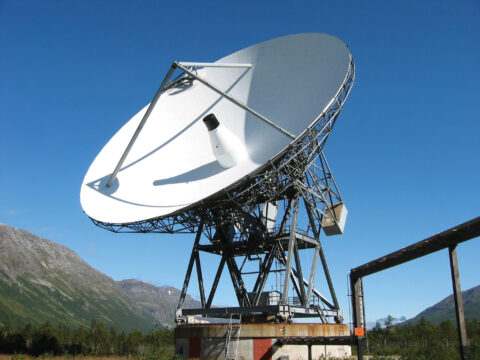Increasing amounts of greenhouse gases released by human activities do not just affect only the lower atmosphere: Scientists project that anthropogenic carbon emissions have caused a cooling trend in the upper atmosphere, between 200 and 400 kilometers, over the past few decades.

Cooling in this atmospheric region can affect the operations of satellites and the orbits of space junk. However, data about cooling trends in the upper atmosphere are still incomplete, and better data are needed to confirm this projection.
Ogawa et al. present the first quantitative measurements that match projected upper atmospheric cooling. The authors analyzed data from the European Incoherent Scatter radar, which studies the interactions between the Sun and Earth on the basis of disturbances in Earth’s ionosphere and magnetosphere.
From the radar’s raw data spanning from 1981 to 2013, the authors teased out information about changes in upper atmospheric temperature. They calculated a cooling trend of 10-15 kelvins per decade near altitudes of 220-380 kilometers and little to no cooling at 400 kilometers.
The authors note that this height profile of their observed trend is in accord with those projected by previous models, but their estimated levels of cooling actually exceed the modeled ones. They speculate that this excess could be related to increases in anthropogenic carbon emissions. Further, their findings may have an impact on future modeling of the upper atmosphere, which will be important for planning future satellite missions. (Geophysical Research Letters, doi:10.1002/2014GL060591, 2014)
— JoAnna Wendel, Staff Writer
© 2014. American Geophysical Union. All rights reserved.
© 2014. American Geophysical Union. All rights reserved.
